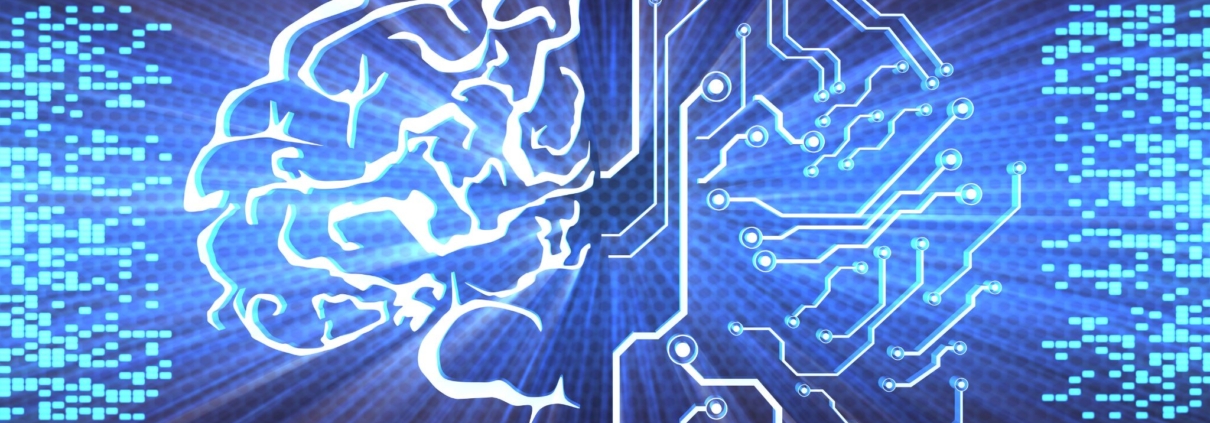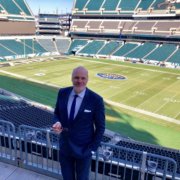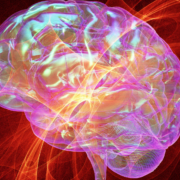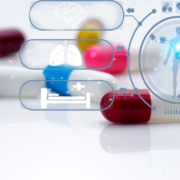How TMS treats depression
Transcranial Magnetic Stimulation (TMS) is a procedure that generates magnetic fields to stimulate nerve cells in the brain. The goal: to improve symptoms of major depression. The approach is considered a “noninvasive” procedure because it’s done without surgery. In research, TMS has shown promise in treating multiple conditions when symptoms don’t respond to other treatments, including migraines, smoking cessation, PTSD, OCD, Tourette’s Generalized Anxiety Disorder, and movement disorders such as Parkinson’s. TMS, which is notably different from Electroconvulsive Therapy (ECT), is now used most often as a treatment for depression when other treatments haven’t been effective. Dr. Zafiris “Jeff” Daskalakis knows all about TMS. Dr. Daskalakis is chair of the University of California San Diego Psychiatry Department and director of the University of California San Diego Health’s Interventional Psychiatry Clinic. He has become an internationally recognized expert in treating severe psychiatric disorders with TMS. As a sidebar to this essay about a patient’s experience with TMS, BrainWise Managing Editor Matt Villano recently sat down with Dr. Daskalakis to understand more about the science behind the treatment. What follows is an edited transcript of their interview.
BrainWise: What is happening during a TMS treatment?
Dr. Zafiris “Jeff” Daskalakis: Basically, we’re causing millions of neurons to fire together, all at once. And when those neurons fire in synchronicity, it results in neuroplasticity. Of course, it’s much more complicated than that. To do TMS, an electric pulse generator, or stimulator, is connected to a magnetic coil connected to the scalp. The coil is about two laptops thick and about half a laptop in width. The machine takes electrical charge from the wall and stores that electrical charge in a large capacitor. When that capacitor triggers, it sends the electrical current through the coil for an instant. It’s less than 50 microseconds in duration. That very brief instant of time translates into a magnetic field, which travels through the coil, across the skull, and activates neurons in the brain. There’s no actual electrical conduction; it’s a magnetic field. The magnetic field is much less painful, much better in terms of tolerance. And the magnetic field generates neuronal change. We’re able to get neurons to fire in a certain rhythmic pattern. Why is this important? The old expression is, ‘When neurons fire together, they wire together.’ These neurons firing together and wiring together creates neuroplasticity. Which leads to change.
BrainWise: To be clear, TMS does not involve an electrical charge going into the brain? It’s only a magnetic charge?
Dr. Daskalakis: That’s correct.
BrainWise: How finely targeted is the directionality of this magnetic charge?
Dr. Daskalakis: The area of activation depends on the size of the coil. The larger coil size, the higher the area of activation, the larger the area of activation. The smaller the coil size, the smaller the area of activation. By and large, the coils’ area of activation is elliptical, around three centimeters in diameter. The depth of the impact also depends on the amount of stimulation charge, but at standard stimulation charges, on average, they get about 2 to 2.5 centimeters deep. It’s really that top layer of the brain that is most affected.
BrainWise: Why is this such a big deal?
Dr. Daskalakis: Whenever we look at the brain, there’s always an outer and an inner shell. The inner shell tends to be a lot paler, and the outer shell tends to be a little darker. That’s because the inner shell is associated with lots of neuronal output connections, and the outer shell is really the cell body; it’s where all the action happens. The outer shell allows us to think and function and navigate and interact with our world, think logically, be future minded, and play instruments. And the outer shell just so happens to be that same area that we target with TMS. By stimulating that outer shell repetitively with magnetic fields, we are causing neurons to align. And when those neurons align, that neuroplastic effect takes place. It doesn’t happen right away, and it doesn’t happen with just one treatment, but it happens when you bring people in repeatedly over the course of days to weeks and aim to improve their symptoms.
BrainWise: Can this work for everyone?
Dr. Daskalakis: Not exactly. A certain proportion respond to psychotherapy and a certain proportion don’t. We think that up to a third, perhaps as many as 40% of patients do not respond to conventional treatments, conventional meaning medications or psychotherapy. Of those, about two or three patients out of 100 not only have depression, but also have the type of depression that doesn’t respond to conventional treatment. [Editor’s note: For more on this, click here or here.] This proportion of the population tends to be labored with suicidal thinking oftentimes, because the longer it takes for you to get better, the worse you are. That’s where TMS comes in. TMS is singularly used for that patient population. And we believe that roughly out of those patients who choose to receive TMS, one out of every two or three will achieve a significant clinical benefit.
BrainWise: To what extent are there negative impacts of this treatment? What are the side effects?
Dr. Daskalakis: Lots of groups have looked at this very closely. We have learned that TMS represents one of the safest treatments that we have. There’s an extremely remote risk of seizures. In fact, the only population that we do not have TMS available to is patients who’ve had a seizure disorder. [Editor’s note: Some sources also point out that TMS can be a bad idea in patients who have metallic implants in the brain or skull.] Outside of that, the major side effect associated with TMS is a bit of a headache and some discomfort at the stimulation site, which isn’t profound. And usually, it’s very well-tolerated.
BrainWise: What’s the next frontier of TMS? What questions will you be asking next?
Dr. Daskalakis: There are several areas that we can advance. One of them is how do we make the treatment more efficient? It’s already an extremely efficient treatment, but the treatment requires people to drive into a clinic to get treatment a certain amount of time for a certain number of days. Can we make people better within a week? Can we make people better within a day? These are all hot topics that we need to continue to explore.
The second piece, which goes hand in hand with the first piece, is how do we make the treatment more effective? How do we enhance the efficacy? That leads to the third piece, which is understanding the brain. We have a treatment, and we are narrowing in on the ways that this treatment works in the brain.
I’ve mentioned one mechanism called neuroplasticity, but there’s other mechanisms that are also being considered. One of those mechanisms is connectivity—how different parts of the brain connect to one another. That’s really about the threads of connections between different parts of the brain that may be responsible for inducing depression. Understanding those brain mechanisms is the third piece of the puzzle.
Finally, the fourth piece of the puzzle, I think, is how do we maintain people’s wellness? What do we need to do to continue to treat people so that once they respond, they stay better for longer periods of time? Relapse rates are high. When you go on a medication, you’re not out of the woods just yet. The chances that you’re going to get depressed again could come up down the road. And, similarly with TMS, if you respond, how do we maintain your wellness so that you don’t relapse? Understanding how it works, understanding how we can make it work better, understanding how to make it more efficient, and understanding how we can make the effects more durable are all key pieces of this treatment that we need to continue to pursue.
For more about TMS, read this essay by a patient who recently completed 37 sessions of the treatment for depression.
This essay has been factchecked by members of NAN’s Publications Committee. For more about that process, click here.









